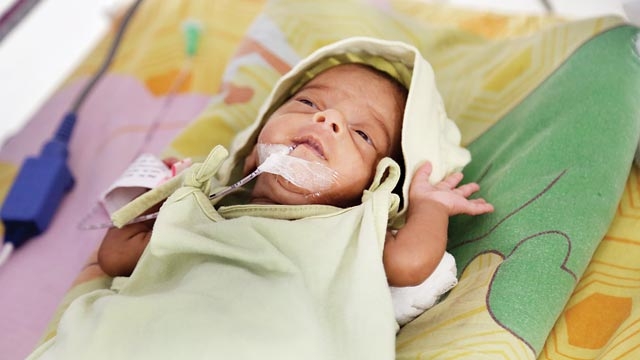Et tu, Evolution?

Fifty years ago, roughly 30 babies in 1000 found it physically impossible to emerge from the birth canal. Today that figure stands at 36. We are therefore stuck in a compromise, and C-section babies are living proof of this.
Life has no purpose. We are a creation of chance, a conspiracy hatched by thunder and lightning and water and ammonia and hydrogen and methane and dust, demonstrated so persuasively by Stanley Miller in 1953.
Amino-acetonitrile met water and formed glycine three billion years ago; a sperm met an egg and produced a baby yesterday. All random, all Harry and Sally; need not have happened, very easily did not. Like Hubble, whose discovery of the red shift allows us to walk backwards till we reach the moment of the Big Bang itself, the Theory of Evolution lets us rationalise our own beginning, right back to the time of that chance creation simulated by Miller.
Life may not have a purpose but science does —to make our lives more comfortable. In doing so, scientific intervention has the capacity to change the course of human evolution. Tools altering human anatomy is but one instance. This week, one such intervention set the evolutionary barn on fire. Philipp Mitteroecker and colleagues, writing in the Proceedings of the National Academy of Sciences, USA, proposed that Caesarean section is altering the course of human evolution by helping babies that otherwise succumb to the process of childbirth, survive. The scientists claim this evolutionary selection has resulted in an astonishing 10 to 20 per cent increase in fetopelvic disproportion. To be sure, Mitteroecker and his friends aren’t the first to suggest this. Writing in the American Journal of Obstetrics and Gynaecology in 2011, Dr Joe Walsh had proposed an evolutionary fallout of the C-section. “Maternal pelvis can get smaller over time, and fetal birthweight can get greater over time, because there is now nothing to limit these changes,” he wrote. To understand this hypothesis, one needs to first comprehend the evolution of two of our most prominent anatomical features – brain and pelvis.
Human brain has evolved remarkably quickly. In a matter of 2.5 million years it has tripled in size. Scientists believe much of the new neural volume is utilised for social cognition, empathy, and language. But with large brains comes the awkward problem of them having to pass through the constricted birth canal and a pelvis that – ask any screaming about-to-be-a-mother – appears hopelessly ill-designed for delivering a baby.
Our brains have evolved to become enormous but what about the pelvis — Has it kept pace with the rapidly altering size of the human brain? A widening of the pelvis, and, consequently, of the birth canal, would be a natural evolutionary response to the enlargement of the brain that has to pass through it. Well, it is not so simple. The widening would cause havoc with our gait and bipedalism, not to mention that it will severely affect heat dissipation, another factor responsible for pelvic evolution. We are therefore stuck in a compromise, of which the implausible gymnastics performed by a baby just before it enters the world is living proof. Fifty years ago, roughly 30 babies in 1000, found it physically impossible to emerge from the birth canal. Today that figure stands at 36.
C-section has allowed heavier babies to survive; it has bypassed evolutionary punishment. But there’s more. Not only does it allow for selection of large heads, it also permits the passing of genes that govern pelvic size. A mother with a small pelvis who has just given birth to a baby with a large brain has also passed to it her genes responsible for the small pelvis. Logical evolutionary progression would suggest that the brain would get larger and larger and the pelvis would either remain the same or become smaller and so there will come a time when natural birth would become impossible and C-section the only viable option.
But while C-section might alter the course of evolution, nature has its own way of getting back. It turns out that a baby’s primary defence against infections and allergies are the microbes it receives while being squeezed through the vagina and into the world. Vaginal fluid contains an astounding diversity of microbial flora that C-section babies miss out on. Indeed, scientists are now of the opinion that vaginal fluid is as crucial as mother’s milk, so much so that doctors in the West have begun bathing the newborn with it. Clearly, the vagina speaks in many voices and not just a monologue.
In the coming million-odd years, neuroscientists believe the brain size would be double of what it is today. The pelvis, on the other hand, would not change much, unless we reject bipedalism for quadrupedalism. The onus of propagating the human race, therefore, would rest squarely on surrogate mothers with exceptionally wide pelvis or, more likely, the C-section. Unless, that is, engineers and biologists get together and create the perfect artificial womb. Who knows, they might yet evolve to do precisely that.
This article first appeared in DNA India on Dec. 10, 2016.